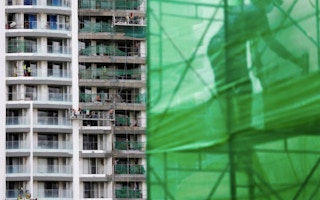More than one million people in Phnom Penh face the risk of increased flooding and loss of livelihoods as wetlands in the Cambodian capital are destroyed to build apartments and industries, human rights groups warned on Monday.
Developments - including the ING City township - will reduce the Tompoun wetlands to less than a tenth of its 1,500 hectares (5.8 sq miles), and lead to the eviction of more than 1,000 families who live on its edge, activists said in a report.
It would also impoverish thousands of families who farm and fish in the wetlands in the city of 1.5 million people.
“The wetlands sustain local communities and play a vital role in Phnom Penh’s waste management and flood prevention,” said the report from Equitable Cambodia, LICADHO, the Cambodian Youth Network and land rights group Sahmakum Teang Tnaut (STT).
“Millions of Cambodians will likely be affected by the potentially devastating impacts of destroying the wetlands.”
Phnom Penh, situated on the banks of the Tonle Sap, Mekong and Bassac rivers, is already highly vulnerable to floods, particularly in the rainy season from June to October.
Lakes and wetlands such as floodplains, mangroves and marshes regulate water flow, minimise flooding, purify water and replenish groundwater, said Diane Archer, a senior research fellow at the Stockholm Environment Institute in Bangkok.
“City authorities should recognise wetlands as an important resource to be protected and integrated into the urban environment,” she told the Thomson Reuters Foundation.
“Yet in many cities, expansion takes place without the necessary enforcement of urban planning or in-depth environmental impact assessments,” she said.
Across rapidly expanding Asian cities, demand for land for housing and office blocks has put greater pressure over land.
Cambodia has endorsed the international convention on wetlands protection, yet about half its wetlands have disappeared over the last 15 years, according to conservation group Wildfowl and Wetlands Trust (WWT).
In Phnom Penh, 15 of 25 lakes have been infilled, with about a third of the Tompoun wetland infilled so far, STT said.
Dredging the more than 100 million tonnes of sand needed for infilling poses added risks to communities and the environment, said Eang Vuthy, executive director of Equitable Cambodia.
“Given that millions will be affected, in-depth studies and public consultations are needed,” he said.
A spokesman for the government said the reclamation was necessary for the city’s development, and that an environment impact assessment had been done.
“A canal is being built to divert excess water, and there is a wastewater treatment plant. Some relocations are necessary, but they have been given ample time to move,” said Phay Siphan.
In Phnom Penh, nearly 4,000 families were evicted in 2007-08 from their homes around Boeung Kak - “boeung” is lake in Khmer - as it was filled in for a business district.
Authorities must now prioritise public interest, said Vuthy.
“A balanced model that protects the rights of people and the environment with urban development is possible, but only with meaningful consultation and research,” he said.
This story was published with permission from Thomson Reuters Foundation, the charitable arm of Thomson Reuters, that covers humanitarian news, climate change, resilience, women’s rights, trafficking and property rights. Visit http://news.trust.org/climate.










